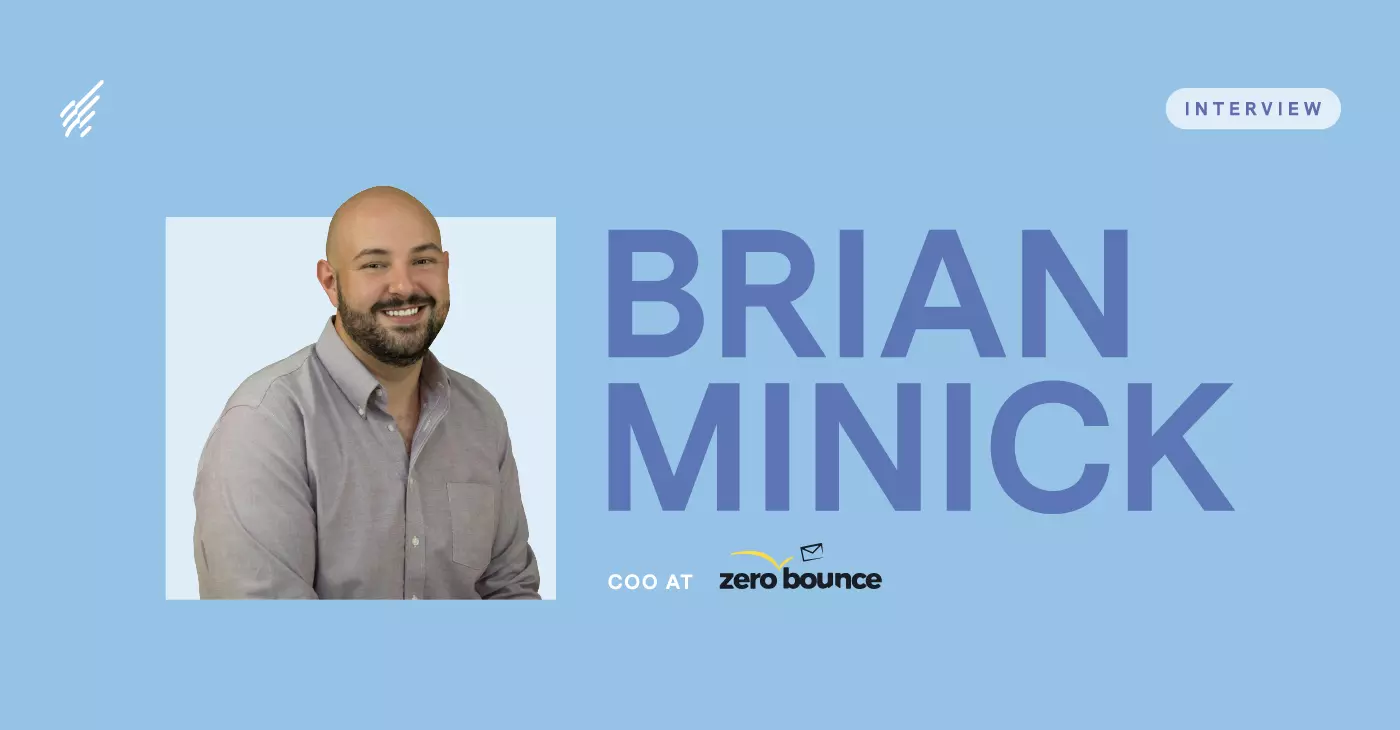The Biggest Email Marketing Hurdle (and How to Overcome It): Interview with ZeroBounce COO Brian Minick
August 24, 2022 5 min read

Email marketing is often praised as the most effective marketing channel to date. With an impressive ROI, it’s hard to find a company that isn’t utilizing it to some degree.
However, that’s not to say that everyone is hitting it out of the park with their email marketing strategy. In fact, many business owners and marketers are making mistakes and experiencing hurdles they have no idea how to overcome.
To get more insight into the email marketing issues people and businesses may be facing, we chatted with Brian Minick, COO of ZeroBounce. ZeroBounce helps email senders ensure the data they use is up-to-date so they can reach their customers and prospects successfully – in the inbox.
With over 15 years of experience, Brian is an email deliverability thought leader and oversees ZeroBounce’s support and sales teams, streamlining operations and making sure users get the most out of the email validation and deliverability platform.
Here’s what he had to say.
What would you say is currently the biggest hurdle most email marketers are facing today?
Getting into the inbox. It’s been more and more challenging to accomplish this.
There’s so much mail being sent now that mail filters are really starting to turn up the dial on filtering out what they consider spam emails.
Just check your spam folder. Look how many go in every day. It’s crazy.
Why should email marketers care about not only avoiding decreased email deliverability but improving their deliverability?
Deliverability is the holy grail of email marketing. It means not just getting delivered but getting into the inbox. Delivered means your email was sent. Sending emails means nothing; anyone can do that. Most senders will end up in spam if they’re doing it carelessly or without real thought and best practices.
Why should you care about the inbox vs. spam folder? I think just even saying the statement out loud will give you a clear answer.
However, just think about what is more valuable to you as a business. One million emails in the spam folder, or 100k emails in the inbox? If you said 100k in the inbox, you are correct. That’s many more eyes on your content.
No one is checking spam folders anymore.
Email marketers are smart to care about improving their deliverability because that helps them land more emails in the inbox. The more people see your emails; the higher your click rates will be. That, in turn, fosters better deliverability.
Why do you think there is a lack of understanding around the negative repercussions associated with poor deliverability?
The reason could be that they don’t teach this stuff.
So what does it mean when you have a negative sender reputation? Well, for starters, your email service providers (ESP), will start to dislike you, consider you a spammer, and potentially even kick you off their platforms. So there’s a bunch of money down the drain.
Some will also move you to a bad reputation infrastructure that they already have, and it’s already burnt up. Since you can’t mess it up more than it already is, there’s not that much harm for them. As long as you keep paying, they’ll keep sending emails to spam folders.
All of this is no different than your professional reputation. Isn’t it important to have good business contacts? Isn’t it important that people trust you when you talk to them and that they want to do business with you? It’s the same with email.
What are some practices email marketers are doing that will negatively impact their deliverability?
Buying lists and blindly sending emails to them. The good ol’ shotgun approach, or “spray and pray.”
If you just take the concept at face value, it actually looks very appealing. We need customers, so let’s buy a list and send an offer to them. After all, that’s how traditional marketing has always been done, right?
The difference is that with traditional marketing, or even direct mail, you are guaranteed to get to their mailbox. Just imagine if the mailman kept a “spam” folder on his truck, and all advertising went there instead of your mailbox. Would you still buy direct mail lists? Probably not. It’s the same concept for email marketing, but someone is actually doing it! And it’s not just one person; it’s many thousands of spam filters and mail providers. Some are even talking to each other to make them both better.
What are some things people can do to improve their deliverability?
First and foremost, have a healthy, opt-in email list. Make sure those people want your emails.
Second, protect your sending reputation so that it stays high. Check and see that you’re not on blacklists with the domain or IP address that you send from.
Then, test your emails before you send them. ZeroBounce offers seed email accounts where you can test where the message landed when you sent it to us (inbox/spam/blocked). Make adjustments and continue to improve until your message gets to the inbox. Then you can send that email to your list.
Lastly, don’t forget to clean your data every few months. Business data is churning fast right now, so make sure you’re sending emails to real people. Bounce rates also affect your deliverability. You want as low of a bounce rate as possible on every send. Anything higher than 2%, and you are going to start having issues.
If you have an email marketing strategy, good for you. However, if you aren’t giving much thought to who you’re sending your emails to and whether or not your emails are actually landing in the inboxes of your subscribers, then it’s time to get to work.
A poor sender score or negative deliverability rates are very hard to fix, so make sure you address the issue before it becomes a problem. Use some of the recommendations Brian offered above, and make sure you check out Benchmark Email’s Smart Sending feature. We take the guesswork out of cleaning up your email list by automatically selecting your least engaged subscribers and skipping an email send to them. This ensures that their inactiveness doesn’t negatively impact your sending capabilities, ensuring more of your emails actually make it to the inbox.





